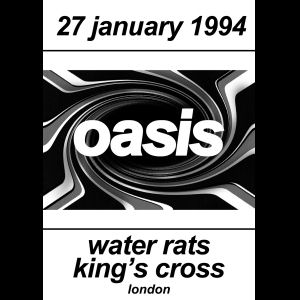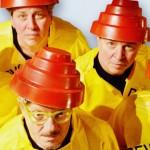It’s Thursday 27th January 1994. A band called Oasis are about to step on the stage at 328 Grays Inn Road, Kings Cross. If you’re a Londoner, an indie kid, a Gallagher fan or work in the music industry (or you could be all of the above) you will know this legendary venue: The Water Rats.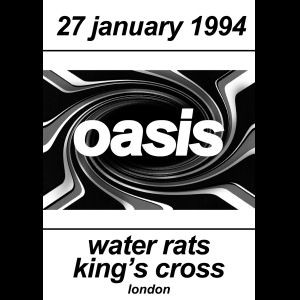
Also on the bill that night are two other bands that didn’t stand the test of time: Cream Soda and Orange Deluxe. But let’s peel back the layers of history just a little further to look at the events that led up to this day.
May 1993 and Oasis are signed to Creation Records after Alan McGee just happens to catch them playing at the equally legendary King Tut’s Wah Wah Hut in Glasgow.
Fast forward to 1st December and the band begin their pre-Christmas tour at the Birmingham Institute. Apparently, some promoters around the country manage to book them for just £50. Other dates on this tour include Warwick University (which is actually in Coventry – but we’ll come to the Coventry connection a bit later) and Liverpool’s Crazy House. Reviewing their gig at the Institute, the NME’s infamous Johnny Cigarettes gives his opinion in his usual disparaging style:
“If Oasis didn’t exist, no one would want to invent them. For a start, they look and sound like they’re long overdue product from a bankrupt Polymer Records Manc Scally also-rans factory. Vaguely trippy guitar almost-tunes with vaguely late ’60s rock tendencies, vaguely Ian Brown as Tim Burgess front man, singing in a vaguely tuneless half-whine, vaguely shaking a tambourine, vaguely… er, yes, well, you get the picture.”
Tour over, it’s the 4th January 1994 and sessions that the band recorded before Christmas are finally broadcast on BBC Radio 1. It is the first time that the world has ever heard ‘Shakermaker’, ‘Up in the sky’, ‘Bring it on down’ and ‘Cigarettes and Alcohol’.
On 8th January, the band are ushered off to Monnow Valley Studios to record more songs. The next day, 9th January, a limited white label 12″ promo single of ‘Columbia’ is being plugged to radio stations. Back in Wales, however, the relationship between the band, Dave Batchelor (producer) and Dave Scott (engineer) reportedly quickly disintegrates.
On 15th January, an issue of the NME presents top tips for 1994, hinting at a short-lived prototype Britpop scene: “The New Wave of the New Wave”. Among bands approved by the New Musical Express are Elastica, Suede, Shed 7 and Echobelly, with Elastica making the front cover.
Legend has it that when a Creation rep arrives at Monnow Valley Studios on 26th January, only a rudimentary ‘Slide Away’ and a handful of Rolling Stones covers with Noel singing have been recorded by the band. The £800 a day studio fee has been wasted. Meanwhile, back in London, in response to another bland list of nominees for the Brit Awards, the NME stages its first ever BRAT Awards. Winners include Radiohead, Suede, Elastica… and Oasis.
And so, back to the start… or is it the future? It’s Thursday 27th January. The first gig of 1994 for the band (and a media-friendly one at that) at The Splash Club at 328 Grays Inn Road: The Water Rats. The event is widely regarded as Oasis’ big breakthrough gig in London. They play in front of a sell-out crowd including numerous supportive journalists and early fans. Over 200 disciples are turned away at the door of the packed venue.
If you were in the right place (London) at the right time (effectively – although nobody knew it at the time – the start of the biggest British cultural and musical movement of the 1990s), this must have seemed like a significant event, even if the packed crowd in that relatively small back-room venue didn’t know quite what lay ahead, neither for Oasis nor for the British music scene and the frenzy that brothers Gallagher and co. would go on to create.
So close your eyes for a second and imagine what it would have been like to have been in that moment. In that building. Peel back time like an onion. Feel the layers and layers of historical energy that exist within the four walls of that building: The Water Rats. Keep your eyes closed a little longer. In your mind’s eye, can you see them? The ghosts of Britpop. They are all around you. Twenty years ago. It’s closer than you think.
Ok, so leave your mind’s eye and come back to me for a moment as we continue our time travelling adventure through Britpop. It’s now April 1994 and ‘Supersonic’ is released, reaching no. 31 in the UK charts. In fact, Oasis didn’t have their first number one hit until a year later, in April 1995, when they released ‘Some Might Say’.
Another year on, in April 1996 – two years after their Water Rats gig – Oasis have reached such stratospheric fame that they are able to sell out not just one but two nights at Manchester’s Maine Road stadium, playing to a 40,000 strong crowd. They are supported by Ocean Colour Scene and the Manic Street Preachers. Some might say this truly was rock as a ‘religious spectacle’. The event seemed to encapsulate the feeling of Britpop euphoria that ran rife through the country at that time.
As one fan at Maine Road put it, “It was better than great, it gave everybody there the sense of being part of something special.” But everyone knew it couldn’t last forever. This fan could obviously see into the future: “Cherish (Oasis) now, because they won’t be here forever and in years to come there’ll be people asking what all the fuss was about. Show them the Maine Road video – then they’ll understand.”
And so to the Coventry connection. What possible effect could the events at The Water Rats and at Maine Road (and, of course, at Knebworth later in 1996) have on someone growing up in the centre of the country – Coventry, a city with it’s own rich musical heritage – during the Britpop era? And how has it influenced the musicians that are trying to make their mark today, twenty years later?
“Growing up, I remember watching the ‘live at Maine road’ video avidly – like every week I’d watch it, and dream about playing shows in front of huge crowds,” says Paul Watters, lead singer of Coventry band, Russian Gun Dogs. “But playing to intimate crowds – like when Noel would play songs like ‘Cast no shadow’ and ‘The Masterplan’ – also appealed to me.”
“In interviews from that time, they lament the fact they were too big now to play clubs, namely the Marquee Club (where they played on 8th June 1994) and The Water Rats,” continues Paul. “As a band, we’re well aware about Oasis playing there.” 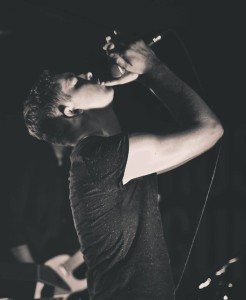
And so Russian Gun Dogs should be. Because as well as being Oasis fans growing up, they have another reason to be well aware of The Water Rats connection. Because Russian Gun Dogs themselves play at the legendary Kings Cross venue next month, just over twenty years after that significant moment in British musical history.
And so the circle is complete. Let’s fast forward a little…
It’s Saturday 15th March 2014. A band called Russian Gun Dogs are about to step on the stage at 328 Grays Inn Road, Kings Cross: The Water Rats. Also on the bill that night are two other bands: Baltic Fleet and Kontakte. Who knows which bands will stand the test of time.
But one thing is certain. Russian Gun Dogs will feel the layers and layers of historical energy that exist within the four walls of that building.
“I like to think the essence of that Oasis line up, Oasis MK1, resonates between those walls,” says Paul. “60% of Russian Gun Dogs will be acutely aware of that. We’ll feel it and we’ll take it back home with us.”
The ghosts of Britpop. They are all around you. Twenty years ago. It’s closer than you think.
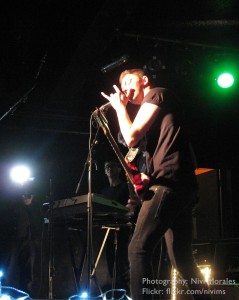
Russian Gun Dogs, Kontakte and Baltic Fleet play The Water Rats on Saturday 15th March 2014.www.brownpapertickets.com

